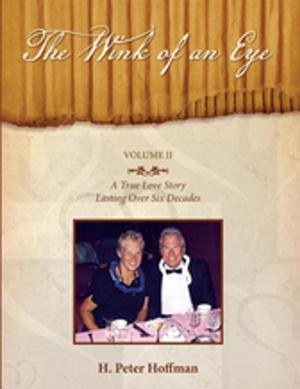A Thousand Moments of Solitude
(A Personal Encounter with Suicide)
Nonfiction, Health & Well Being, Psychology, Suicide| Author: | Federico Sanchez | ISBN: | 9781462833092 |
| Publisher: | Xlibris US | Publication: | April 10, 2006 |
| Imprint: | Xlibris US | Language: | English |
| Author: | Federico Sanchez |
| ISBN: | 9781462833092 |
| Publisher: | Xlibris US |
| Publication: | April 10, 2006 |
| Imprint: | Xlibris US |
| Language: | English |
On November 12, 2002, at the age of twenty-two, my son Mitchell committed suicide. His sudden and unexpected death sent me reeling down a path I needed to travel if I ever wanted to escape the forest of grief and loss in which I found myself. This book recounts my journey to come to terms with the death of my son. The path I started downto fulfill a promise I had made to my son while he was alive, to find answers to the mental problems he sufferedtook me places I had not anticipated. The path became a network of four intersecting paths, and my journey took me far beyond the death of a son to the human condition where we are governed by forces, both internal and external, over which we have little control and little understanding. Intricately connected, the four paths explored in this book are: 1) the autobiographical: the story of my life with my son Mitchell as we struggled with the mental problems that eventually led to his suicide. 2) the diagnostic: the various diagnostic tools available to psychiatrists, which illustrate the level of knowledge in the field and show some of the failings of our present approach to mental disorders. 3) historical fiction: narrative accounts of the lives and deaths by suicide of both historical and fictional characters, including the son of Queen Isabela of Spain; Meriwether Lewis; Vincent Van Gogh; Miguel, a slave working at the Count of Valencianas silver mine, La Boca del Infierno, in 18th-century Mexico; and Michele, a passenger on the Titanic. By telling these stories, sometimes in the first person, I found a way to express my own anguish and pain, something I could not do directly, as well as a way to explore further my relationship with my son and my sons complexity and fullness as a person. 4) scientific explanation of how the brain works: a theory of how the brain works, explaining in detail how mental images and thoughts are formed and travel through the nervous system, how we live in a world of illusions, and how mental illness can be explained in these terms. These four paths are intricately connected and reinforce each other in the book. The diagnostic explains in technical terms what the autobiographical recounts; the autobiographical recounts events which help to explain the complexities and subtleties of human behavior within the context of how the brain works; the historical fiction ties into the autobiographical elements and the diagnostic. The book also confronts the issue of suicide, itself. It answers that elusive question: Why do people commit suicide? The book presents a personal, honest, biographical testimonial of the experience of the suicide of a son. The book speaks from experience, not some abstract philosophical point of view. The organization and contents of the book are unique, a weaving together of four distinct yet related subjects: the suicide of a son, the classification of mental illnesses, narratives of historical fiction, and a theory of how the brain works. The most outstanding feature of this book is that it presents for the first time, to my knowledge, a comprehensive theory of the brain that explains mental disorders such as dementia, delirium, depression, manic depression and schizophrenia. For the first time, suicide is placed in a scientific context, and why and how it happens is explained. In particular, the brain theory here is presented in a simplified form accessible to most, particularly because of the anecdotes and stories that help illustrate how the brain functions and malfunctions. The book also deals with other related subjects: the importance of love in our lives; the possibilities of past lives; how to deal with grief and loss; the possible reasons for the rise of suicide rates in industrialized nations; the failures of the system to cure and prevent suicide and other mental disorders; and possible directions that therapies and medications might explore in the future. The writing is forceful
On November 12, 2002, at the age of twenty-two, my son Mitchell committed suicide. His sudden and unexpected death sent me reeling down a path I needed to travel if I ever wanted to escape the forest of grief and loss in which I found myself. This book recounts my journey to come to terms with the death of my son. The path I started downto fulfill a promise I had made to my son while he was alive, to find answers to the mental problems he sufferedtook me places I had not anticipated. The path became a network of four intersecting paths, and my journey took me far beyond the death of a son to the human condition where we are governed by forces, both internal and external, over which we have little control and little understanding. Intricately connected, the four paths explored in this book are: 1) the autobiographical: the story of my life with my son Mitchell as we struggled with the mental problems that eventually led to his suicide. 2) the diagnostic: the various diagnostic tools available to psychiatrists, which illustrate the level of knowledge in the field and show some of the failings of our present approach to mental disorders. 3) historical fiction: narrative accounts of the lives and deaths by suicide of both historical and fictional characters, including the son of Queen Isabela of Spain; Meriwether Lewis; Vincent Van Gogh; Miguel, a slave working at the Count of Valencianas silver mine, La Boca del Infierno, in 18th-century Mexico; and Michele, a passenger on the Titanic. By telling these stories, sometimes in the first person, I found a way to express my own anguish and pain, something I could not do directly, as well as a way to explore further my relationship with my son and my sons complexity and fullness as a person. 4) scientific explanation of how the brain works: a theory of how the brain works, explaining in detail how mental images and thoughts are formed and travel through the nervous system, how we live in a world of illusions, and how mental illness can be explained in these terms. These four paths are intricately connected and reinforce each other in the book. The diagnostic explains in technical terms what the autobiographical recounts; the autobiographical recounts events which help to explain the complexities and subtleties of human behavior within the context of how the brain works; the historical fiction ties into the autobiographical elements and the diagnostic. The book also confronts the issue of suicide, itself. It answers that elusive question: Why do people commit suicide? The book presents a personal, honest, biographical testimonial of the experience of the suicide of a son. The book speaks from experience, not some abstract philosophical point of view. The organization and contents of the book are unique, a weaving together of four distinct yet related subjects: the suicide of a son, the classification of mental illnesses, narratives of historical fiction, and a theory of how the brain works. The most outstanding feature of this book is that it presents for the first time, to my knowledge, a comprehensive theory of the brain that explains mental disorders such as dementia, delirium, depression, manic depression and schizophrenia. For the first time, suicide is placed in a scientific context, and why and how it happens is explained. In particular, the brain theory here is presented in a simplified form accessible to most, particularly because of the anecdotes and stories that help illustrate how the brain functions and malfunctions. The book also deals with other related subjects: the importance of love in our lives; the possibilities of past lives; how to deal with grief and loss; the possible reasons for the rise of suicide rates in industrialized nations; the failures of the system to cure and prevent suicide and other mental disorders; and possible directions that therapies and medications might explore in the future. The writing is forceful















